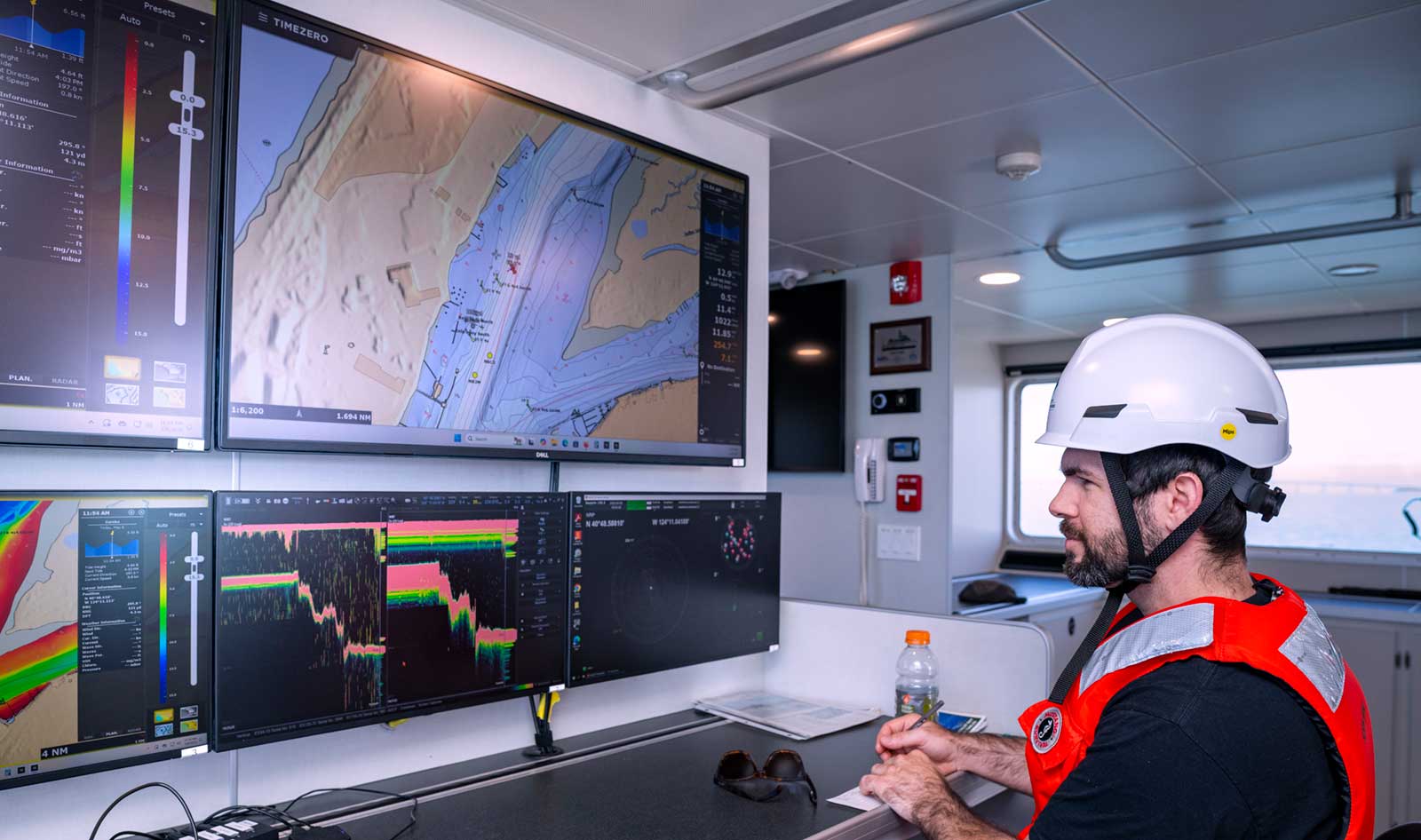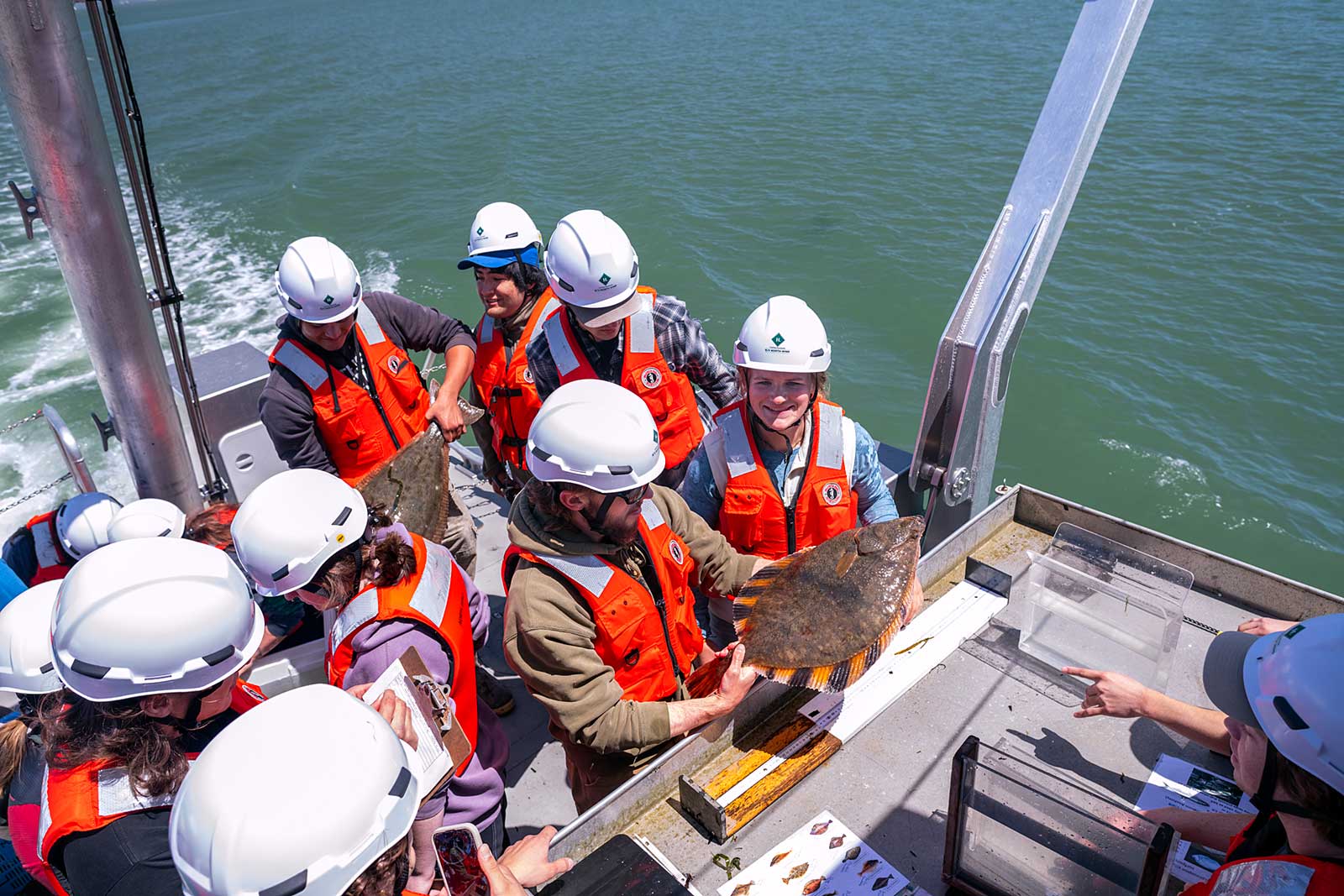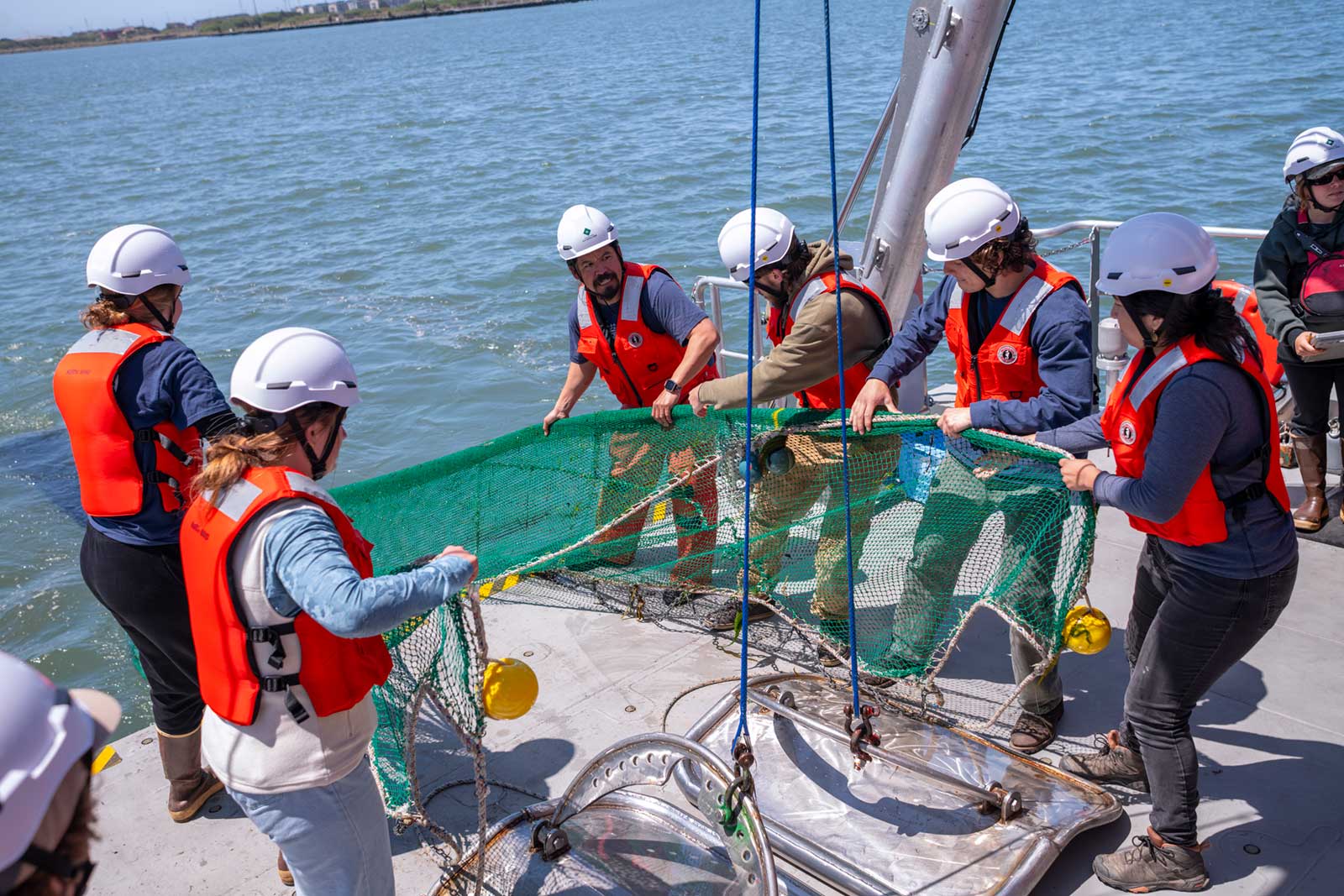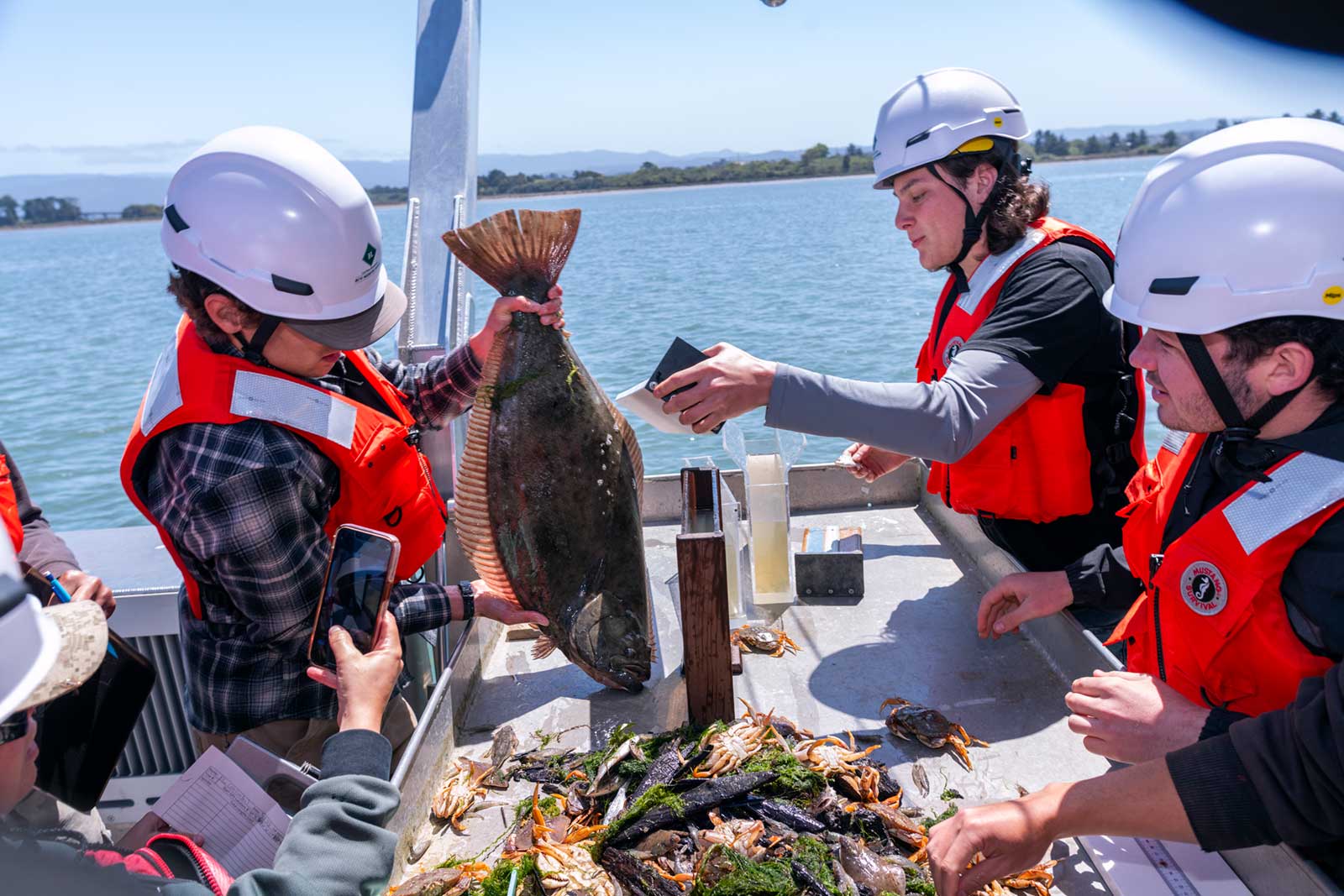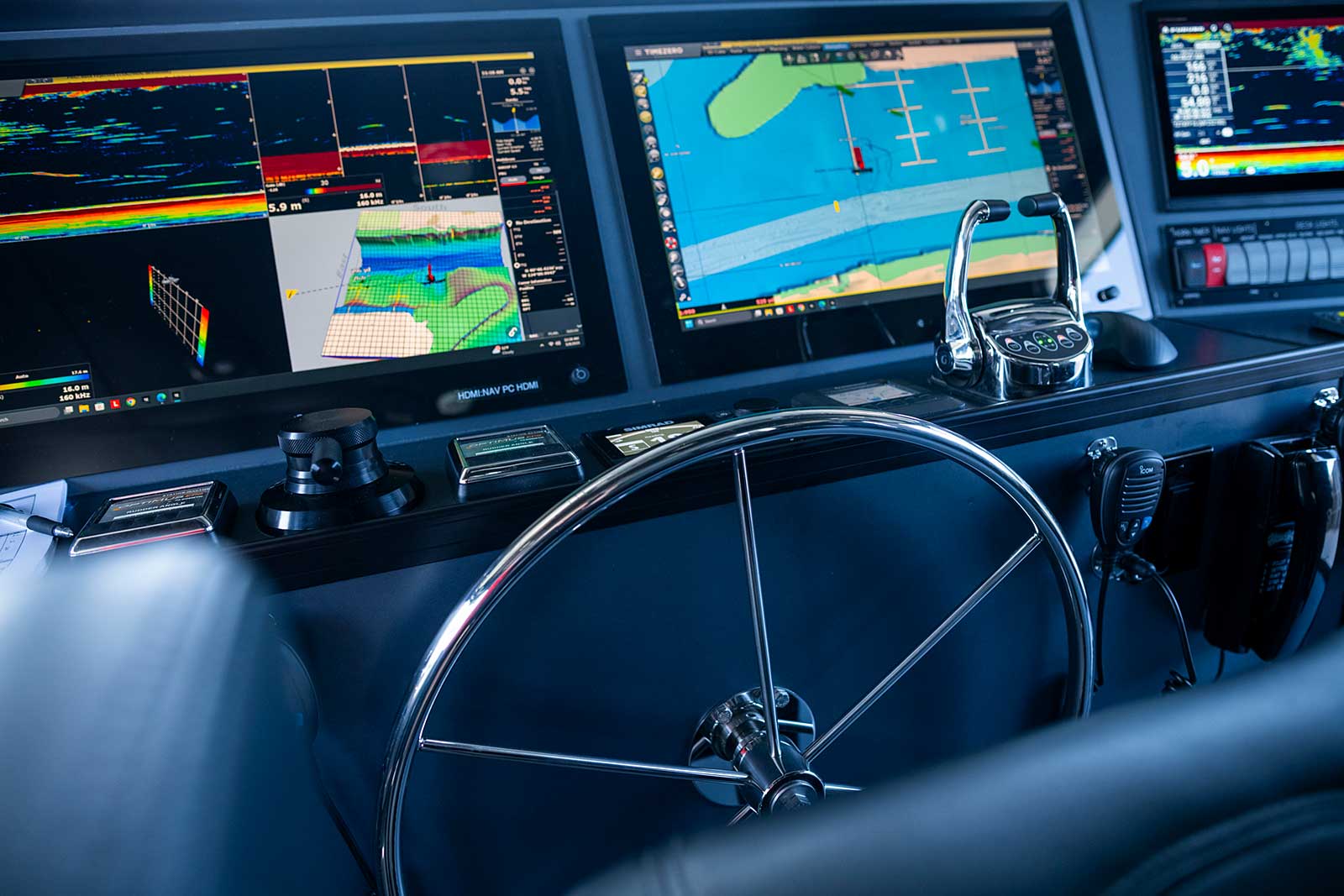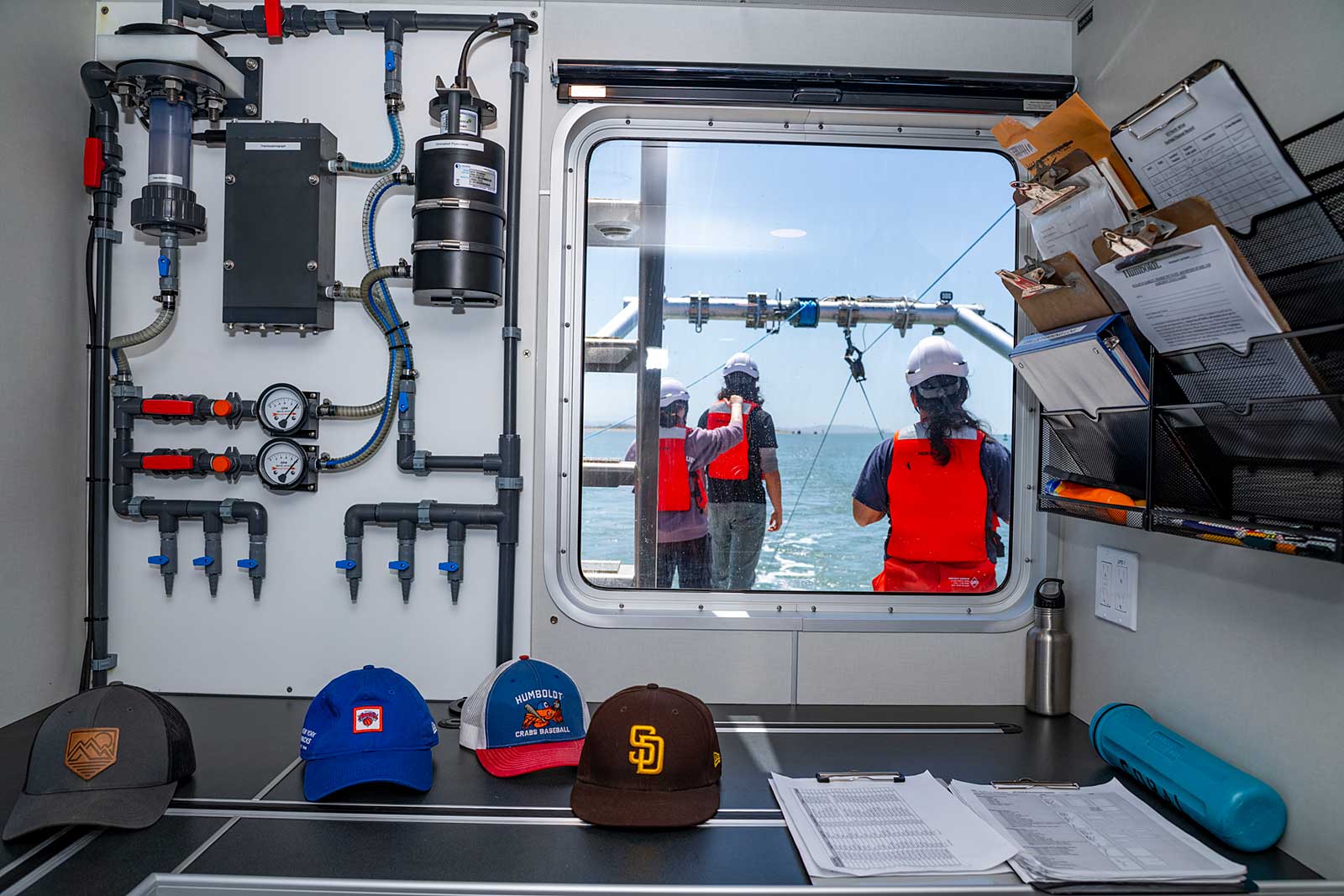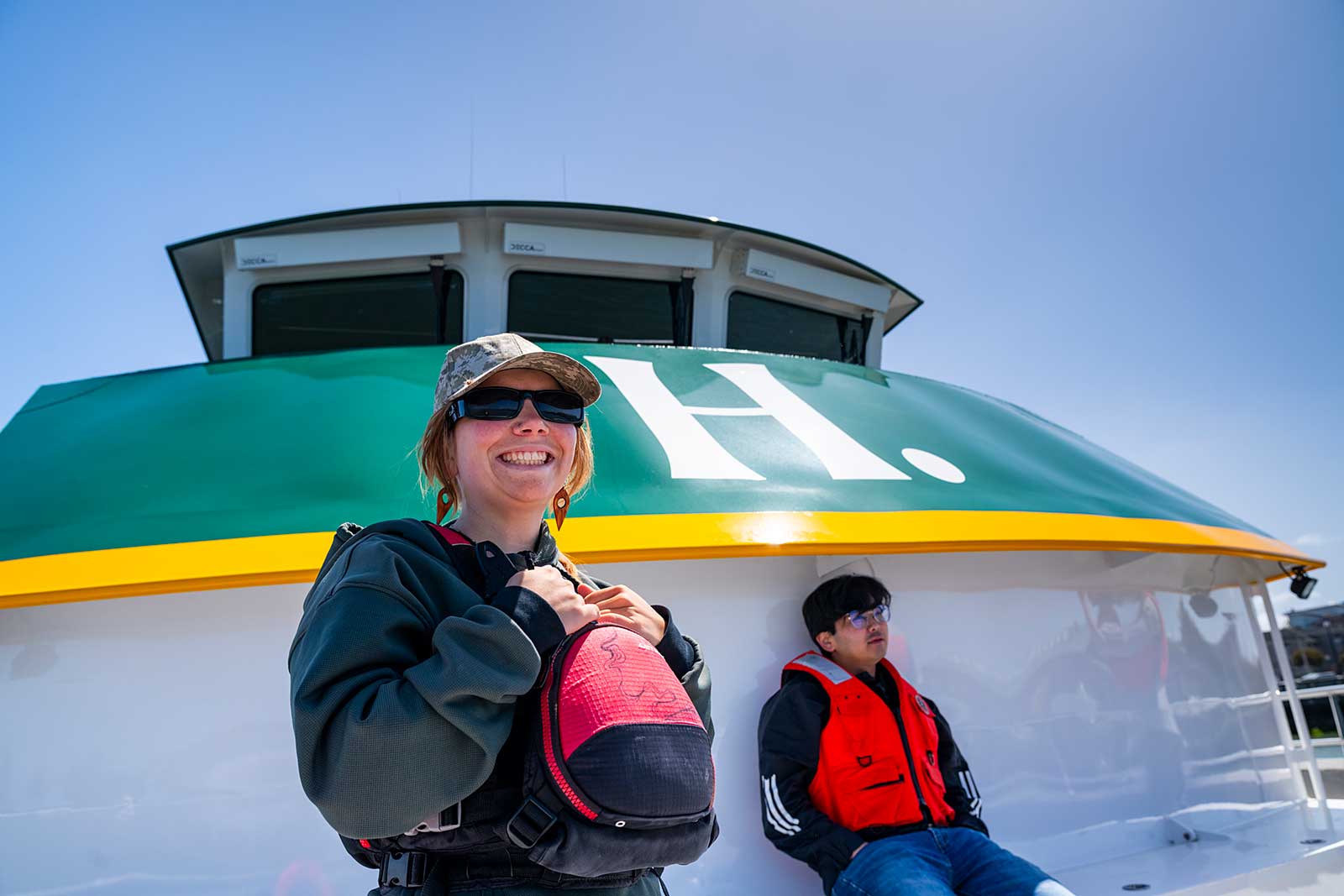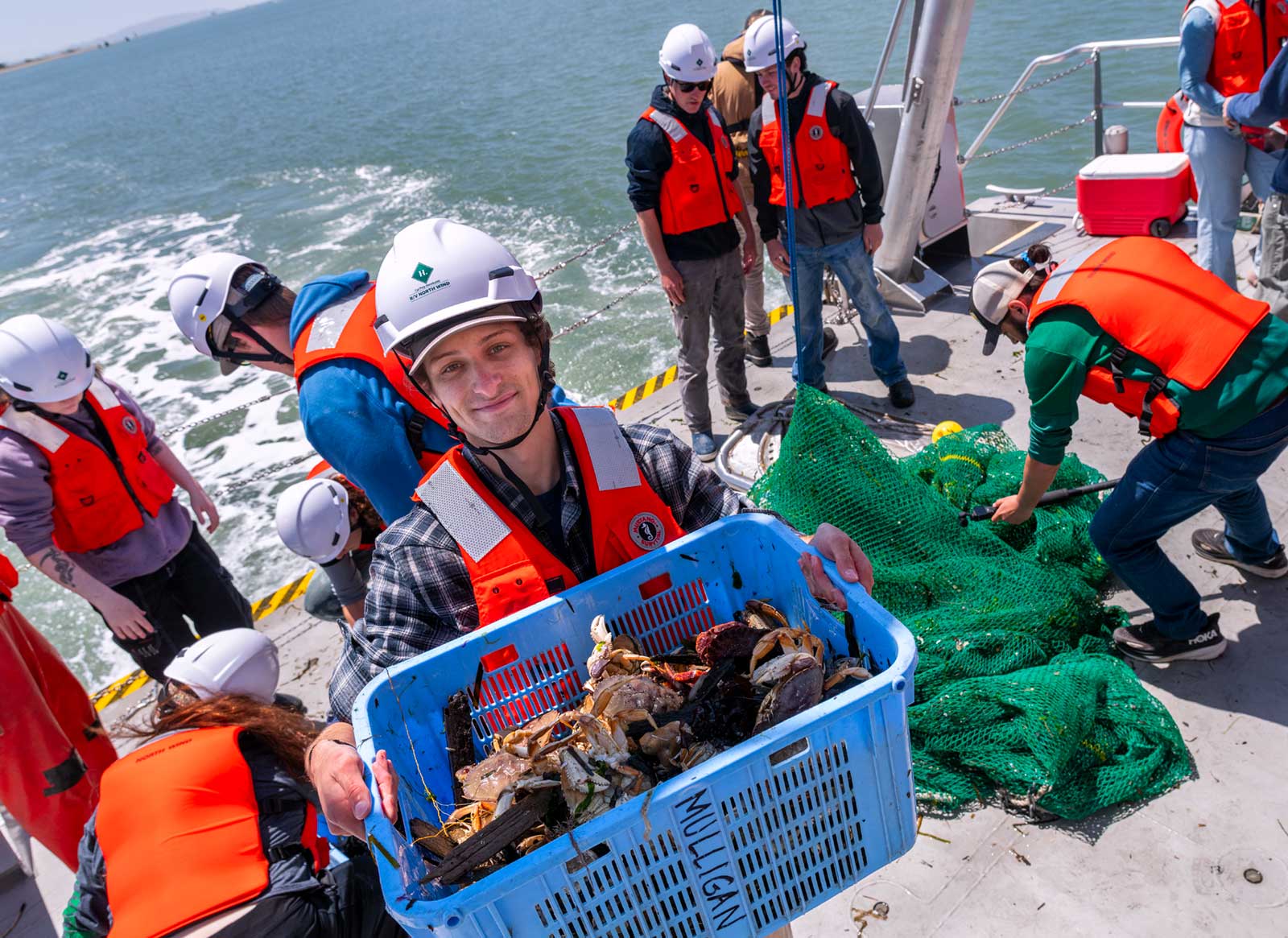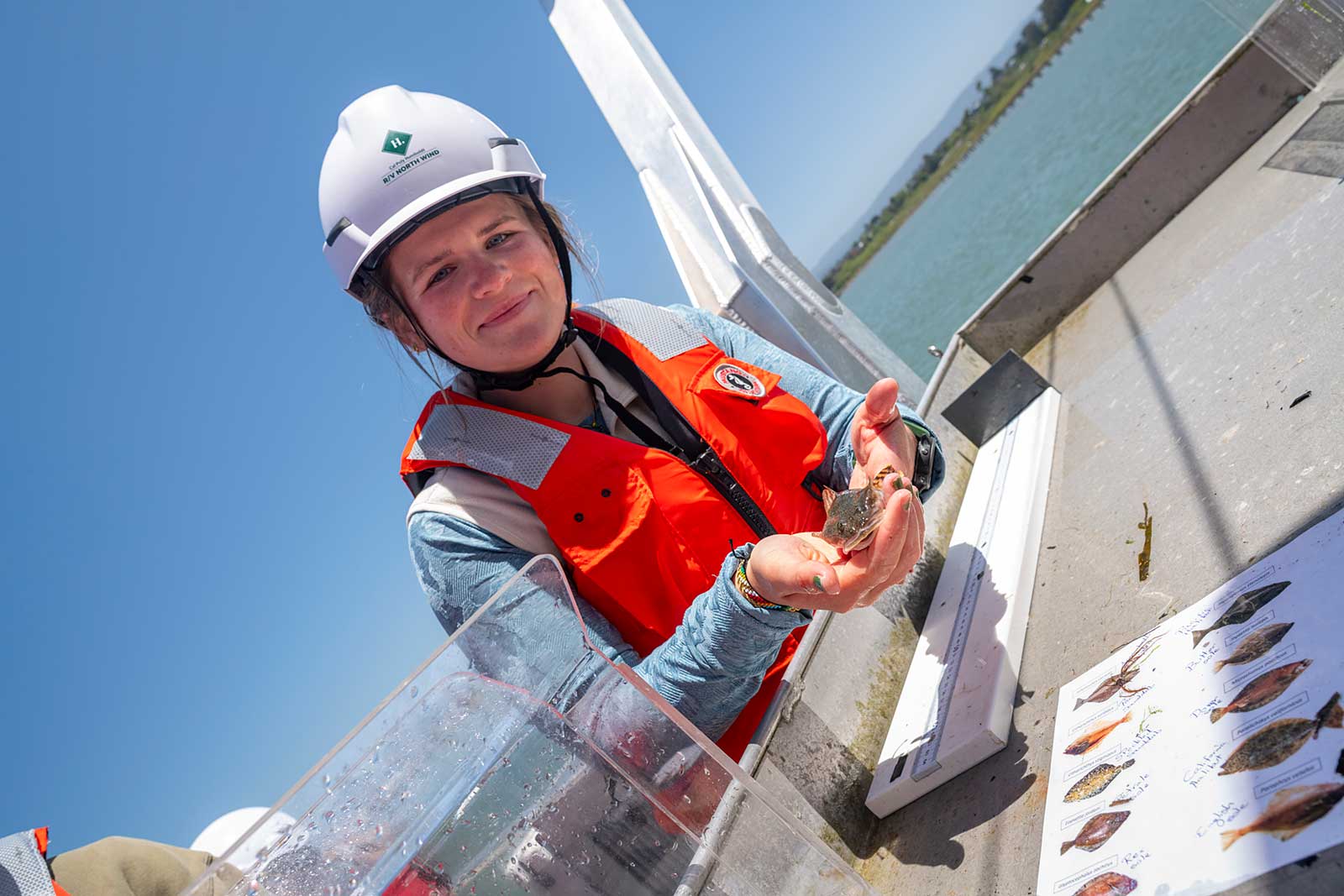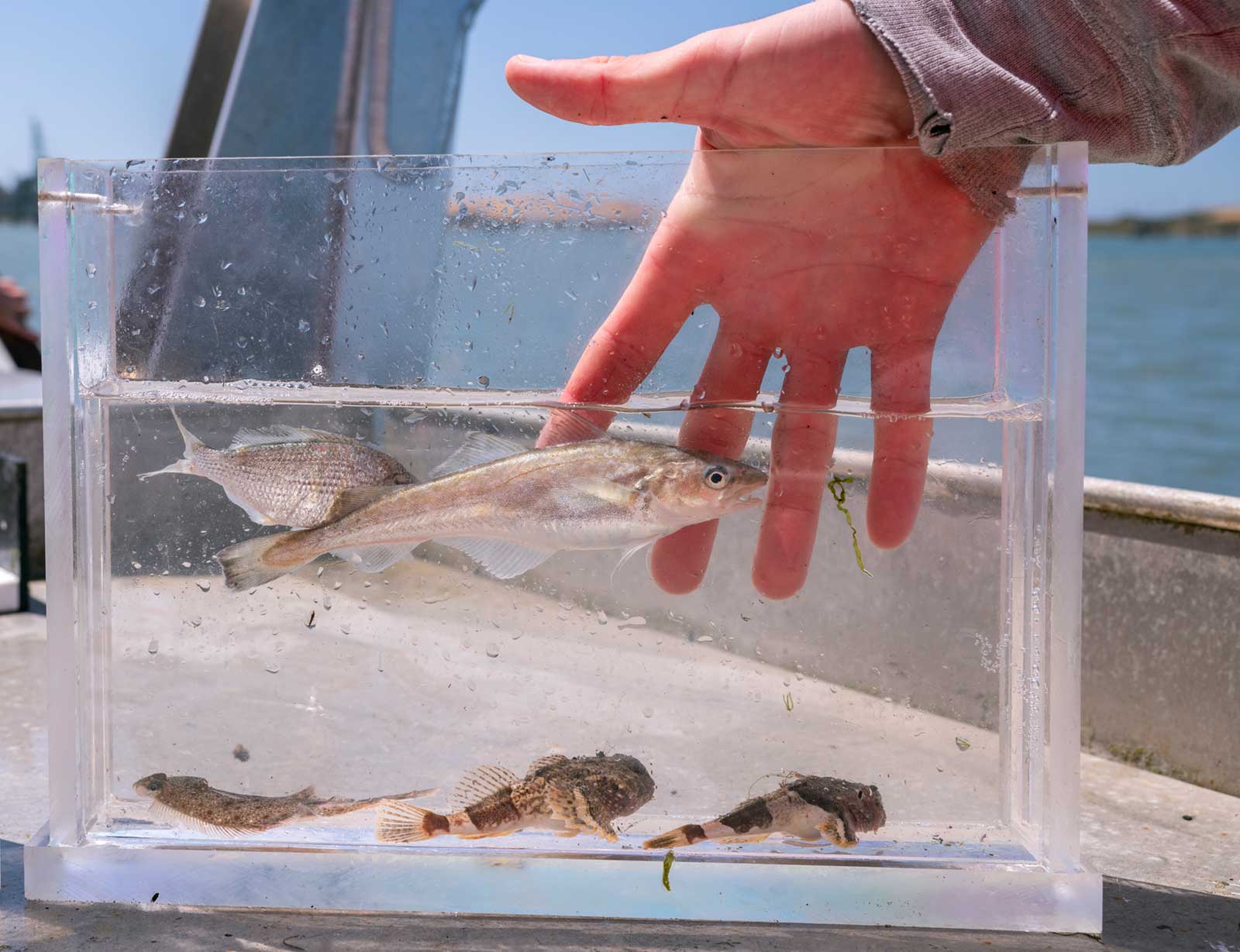Marine Exploration Aboard the
R/V North Wind
Hands-on science takes students from the classroom to the open sea
By Aileen Yoo
Sweeping across the northern Pacific Ocean and along the coastline of California is a wind. It drives a current and an ocean upwelling, a process that helps sustain a rich abundance of marine and plant life. This "north wind" makes the Humboldt coast unique and fittingly, it's the name of Cal Poly Humboldt's new research vessel, which made its way from Washington to Humboldt Bay where it was officially christened last spring.
“Having the North Wind is pretty awesome. The fact that a small university like ours has this research vessel—one where students can learn real skills—speaks to the educational experience Humboldt offers.” Jose Marin Jarrin, professor of Fisheries Biology.
The R/V North Wind's grand entrance signals a new chapter in oceanographic research and teaching for faculty and students at Humboldt.
The successor of the University's longtime research vessel, the Coral Sea, the R/V North Wind is a custom-built aluminum catamaran with state-of-the-art systems that, among many things, show ocean depth and topography and can detect schools of fish. It can also carry up to 40 people and has bunks for 14 people for longer trips at farther distances.
